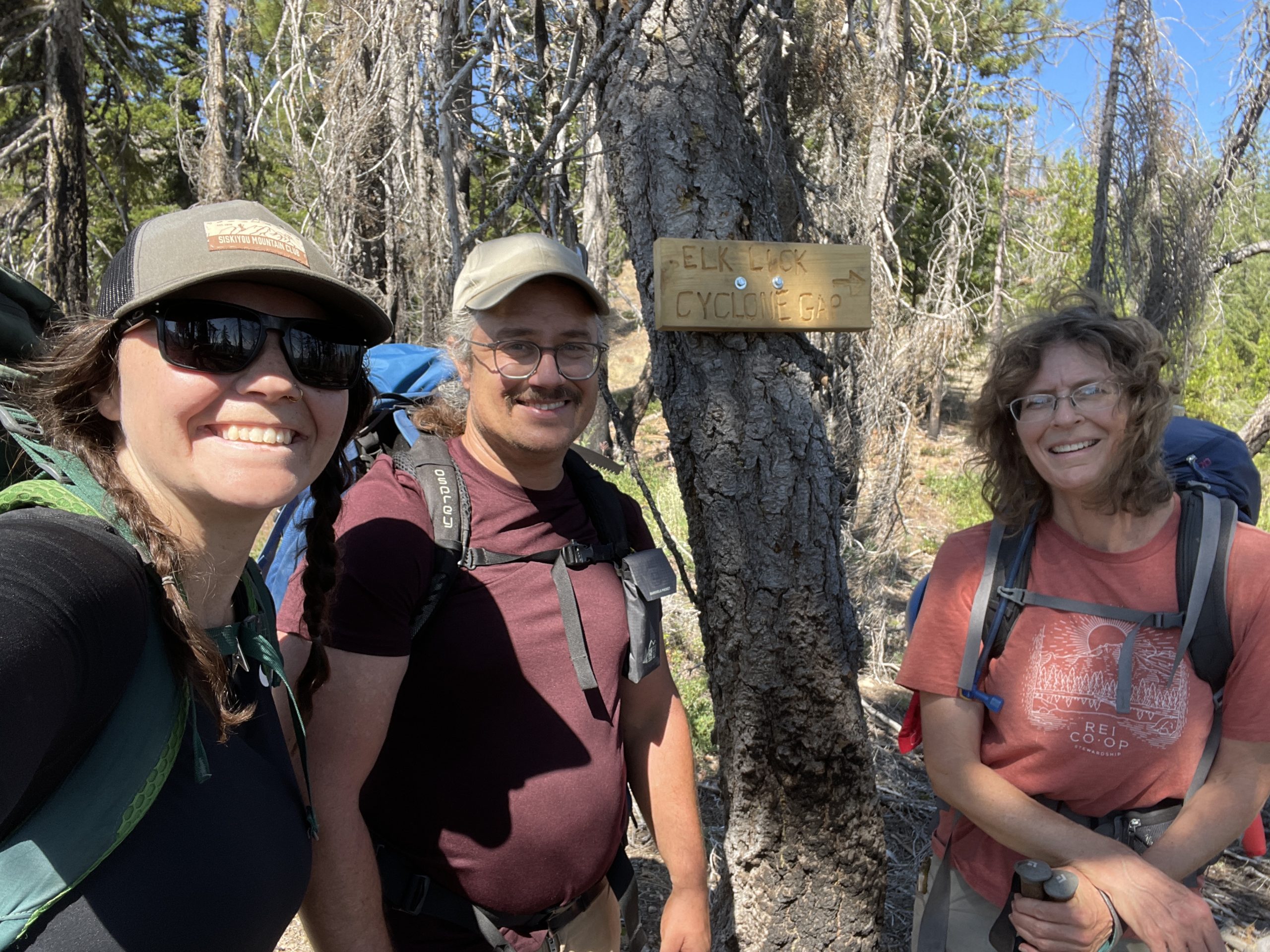Over the last few years alone, trail use in the Ashland Watershed and adjoining areas has skyrocketed, and users have started to compete for turf. As a result, the Ashland Woodlands and Trails Association (AWTA) proposed a “Trail Master Plan,” which would include constructing 10 miles of new trails, authorizing 21 miles of historic and user created trails, and separating mountain bikers from pedestrians in some places.
| Erosion is a constant concern in the Ashland Watershed |
But for the plan to materialize, the AWTA has to raise $50,000 for an environmental assessment. Then the Forest Service has to find $50,000 to match it. And that’s only the first step in a long process.
In the meantime, user conflicts continue and so does illegal use of unauthorized trails, but defining what uses are legal – and where – can be confusing for trail users, so we went straight to the source, Recreation Specialist Steve Johnson for the Siskiyou Mountains Ranger District, Rogue River-Siskiyou National Forest.
“Bicyclists are allowed on all roads and authorized trails in the Ashland Watershed, except for the road leading to Reeder Reservoir,” he says. Reeder Reservoir is Ashland’s municipal water source. Authorized trails have been assigned numbers by the Forest Service and approved after an environmental analysis. They include White Rabbit #1002, Caterpillar #1004, Toothpick #1010, Lamb Mine #1015, Catwalk #1003, Eastview #1012, Horn Gap #1014 (upper and lower), and Bull Gap #1017.
Most unauthorized trails aren’t engineered, surveyed and thoughtfully built by specialized crews. Instead, they are tracks quickly cut by unauthorized trail builders, or etched in by enough wheels traveling a single route. AWTA board-director Nathan Riddle says trails can be created by foot traffic, too. “And as far as I understand, that’s not illegal,” he adds.
“The primary impact [of illegal mountain bike use] is erosion and compaction, which can have detrimental effects on vegetation,” says Johnson. Vegetation is what holds mountains in place, and losing it leads to further erosion and can affect sensitive plant and animal communities.
But illegal trails don’t seem to be tainting Ashland’s water supply. “Since virtually all of the unauthorized trails are a far distance from water, there is no measured impact to either water quantity or quality,” Johnson adds.
So what are the possible ramifications for mountain bikers who decide to veer off of designated trails and roads in Forest Service land? The maximum punishment would be a $5,000 fine, six months in prison, and seizure and forfeiture of equipment, says Donna Mickley, Siskiyou Mountains District Ranger.
“Costs related to repairing and rehabilitating the landscape may also be levied,” she notes. When considering that the impact of bikes on water quality isn’t really measurable, a potential $5,000 fine and six months in the slammer can seem extreme to mountain bikers who enjoy getting off the beaten path.
| Dam at Reeder Reservoir |
Such isn’t the case for hikers. They have pretty much free reign in the watershed, though off-trail hiking may be frowned upon. “Except for the road leading to Reeder Reservoir and the area immediately around it, there are no restrictions [on foot travel],” says Johnson.
Conflicts on the trail may be sending pedestrians looking for new turf. Hikers often feel unsafe sharing roads and trails with bikers who sometimes travel at dangerous speeds. Fast bikers don’t only spook hikers. They spook horses, too. That’s one reason there’s hardly any equestrians presence in the watershed.
User conflicts are being addressed by the AWTA’s plan, but it’s going to take a while until we see on the ground solutions.
Once the estimated $100,000 assessment is complete, alternatives to the “Trail Master Plan” will be considered. After that, the Forest Service will make a decision that won’t necessarily approve new trail building or authorization. “New trail construction will be considered, but it’s premature to anticipate if it will be authorized,” says Johnson.
Trail crews won’t hit the ground until the decision is made and the project is funded. So for now, think about keeping bikes on designated roads and authorized trails. “The Forest Service isn’t issuing citations at this time, but this could change, especially as use and impacts continue to increase,” Mickley notes.
Trail construction on city land doesn’t require the same assessments, and off-trail use there would fall under city regulations. Anytime a “surface disturbance” is proposed on a National Forest, an environmental review must be made to ensure the project complies with the National Environmental Policy Act. Forest Service staffers call this a “NEPA review.”


